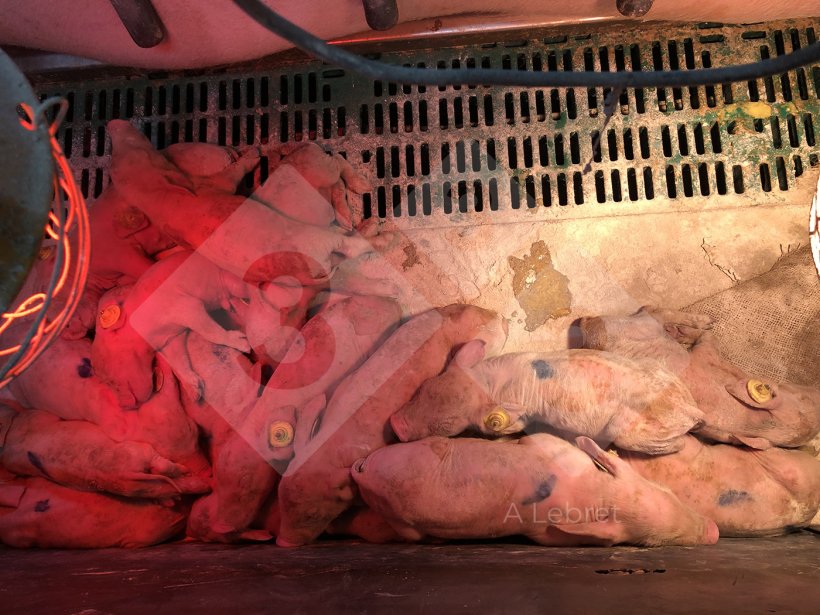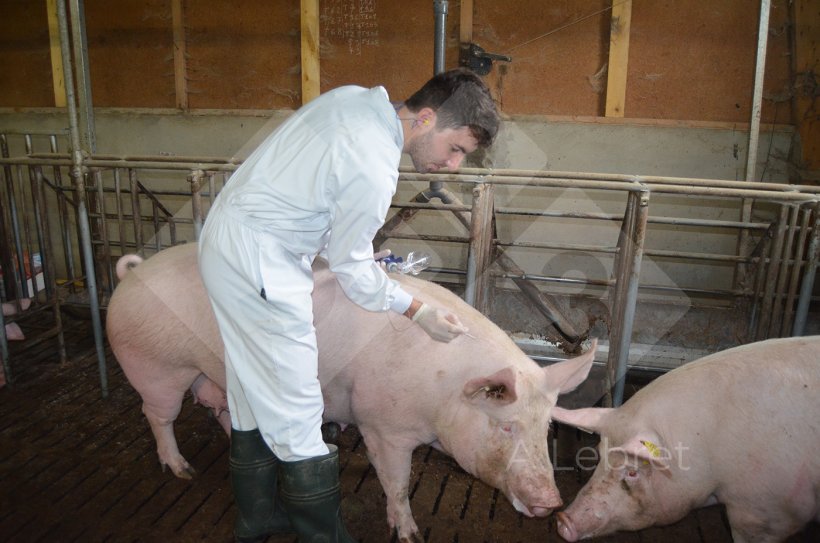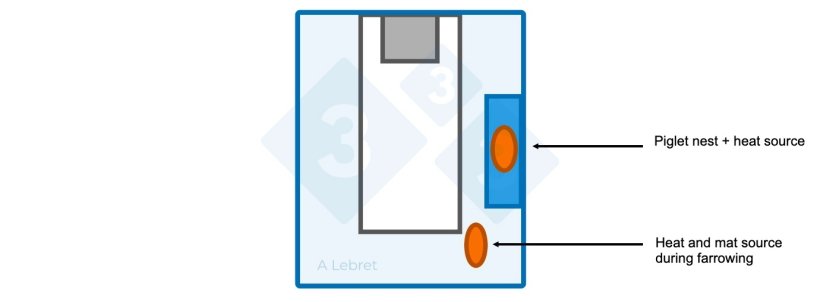Diarrhoea is sometimes profuse and watery causing dehydration and wasting. Morbidity and mortality can range from some piglets in few litters to all piglets in most of the litters. Piglets weaning weights are reduced which can affect their adaptation to post-weaning stage.

Causal agents are numerous and most of the times act in combination.

The management key points are:
Commercial vaccines
Many commercial vaccines including different valences are available on the European market and the definition of vaccine strategy must be adapted herd by herd (Table 1). Vaccination against E. coli and Clostridium perfringens type C is in place in most of French breeding herds. In my opinion, there is no debate on its efficacy.
As with necrotic enteritis caused by Clostridium perfringens type C, vaccination for this pathogen has made clinical evidence of diarrhoea caused by common E. coli very unusual (Monteagudo, 2022).
Regarding Clostridium perfringens type A, the situation is different and quite more challenging and vaccines efficacy is not so evident as for E. coli or CpC. Even its role as causal agent of neonatal diarrhoea (Jacobson, 2022) is debated.
In France, a vaccine against rotavirus (containing one genotype of rotavirus A (RVA) is on the market since only few months and this timing doesn’t allow us to evaluate its efficacy. It is almost the same for Clostridioides difficile vaccine knowing that in addition it is not often highlighted in diagnosis of cases of diarrhoea (absence of typical volcano lesions at histopathology) (Boulbria, 2023).
Table 1. Valences included in the different vaccines available in France against neonatal diarrhoea.
|
E. coli F4ab |
E. coli F4ac |
E. coli F5 |
E. coli F6 |
E. coli F41 |
E. coli F18 ab and ac |
E. coli Lt  |
RVA | CpA α toxin |
CpA β2 toxin |
Cd A and B toxin |
CpC ß toxin |
|
|---|---|---|---|---|---|---|---|---|---|---|---|---|
| ENTERICOLIX® | X | X | X | X | X | X | ||||||
| ENTEROPORC COLI AC | X | X | X | X | X | X | X | |||||
| PORCILIS® COLICLOS | X | X | X | X | X | X | ||||||
| PORCILIS® PORCOLI | X | X | X | X | X | |||||||
| SUISENG® COLI/C | X | X | X | X | X | X | ||||||
| SUISENG® Diff/A | X | X | ||||||||||
| SUIGEN® ROTA COLI | X | X | X | X | X | X |
E. coli = Escherichia coli
RVA = Rotavirus A
CpA = Clostridium perfringens type A
CpC = Clostridium perfringens type C
Cd = Clostridioides difficile
Autogenous vaccines and sows exposure
The different commercial vaccines do not “cover” all the pathogens that we encounter in the field. In these cases, two strategies can be considered:
- autogenous vaccines
- voluntary exposition of sows to “contaminated” material.
In France, autogenous vaccines against anaerobic bacteria or viruses are not allowed in swine. It means that, regarding the pathogenic bacterial agents involved in neonatal diarrhoea cases, autogenous vaccines can only be prescribed to prevent infection caused by Enterococcus hirae (sometimes Enterococcus durans) and less common E. coli that are not “covered” by commercial vaccines. In practice, it means E. coli that not carry F4, F5, F6, F41 or F18 adhesins but which can be pathogenic due to their capacity to produce enterotoxins (mainly Sta and Stb) and/or because they carry the adhesin AIDA-1 (Jacobson, 2022).

In the field, proof of efficacy of such autogenous vaccines is debated and there is no scientific evidence. One explanation could be that, for example due to the fact that enterococci species belong to the normal flora of the intestinal tract, it is quite challenging to choose the “right” strain to include in the vaccine. It is probably the main brake on their development.
In the US, especially to prevent rotaviruses-associated diarrhoea, gilts exposure before entering the farm and sows and/or gilts exposure before farrowing is widely used to homogenize and develop sow immunity (Kumar, 2022). It consists in providing faeces (from sows after farrowing) and/or piglets diarrhoea to gilts in quarantine and sows and gilts in gestation. Despite its evident efficacy against different rotavirus serotypes, European regulations prohibit any feedback strategy in swine herds.
Other prevention tools
Many other management key points have to be considered because of their importance in triggering neonatal diarrhoea:
- Improvement of piglets comfort at birth to ensure a proper colostrum intake and avoid hypothermia (Figure 1)
- Quality of disinfection of farrowing rooms and biocontainment between batches (included all in-all out management)
- MacRebel procedures to reduce contamination between litters
- Water quality
- Management of quantity and quality of food delivered to the sows (especially bacterial quality regarding liquid feed) (Boulbria, 2022)

At birth, it is recommended to provide a mat and a second heat source (concrete and warm floor are strongly recommended) behind the sow.
Temperatures need to be around 22°C for the sows and 31-32°C for the piglets at farrowing. After that, it is possible to lower by one degree each week.
Combined with a well-designed vaccination plan adapted farm by farm and determined after a complete diagnostic approach, improvement of care for piglets and sows around farrowing should solve most of neonatal diarrhoea issues.



